Secret legacy: Genesis Publications presents a vast Yoko Ono monograph
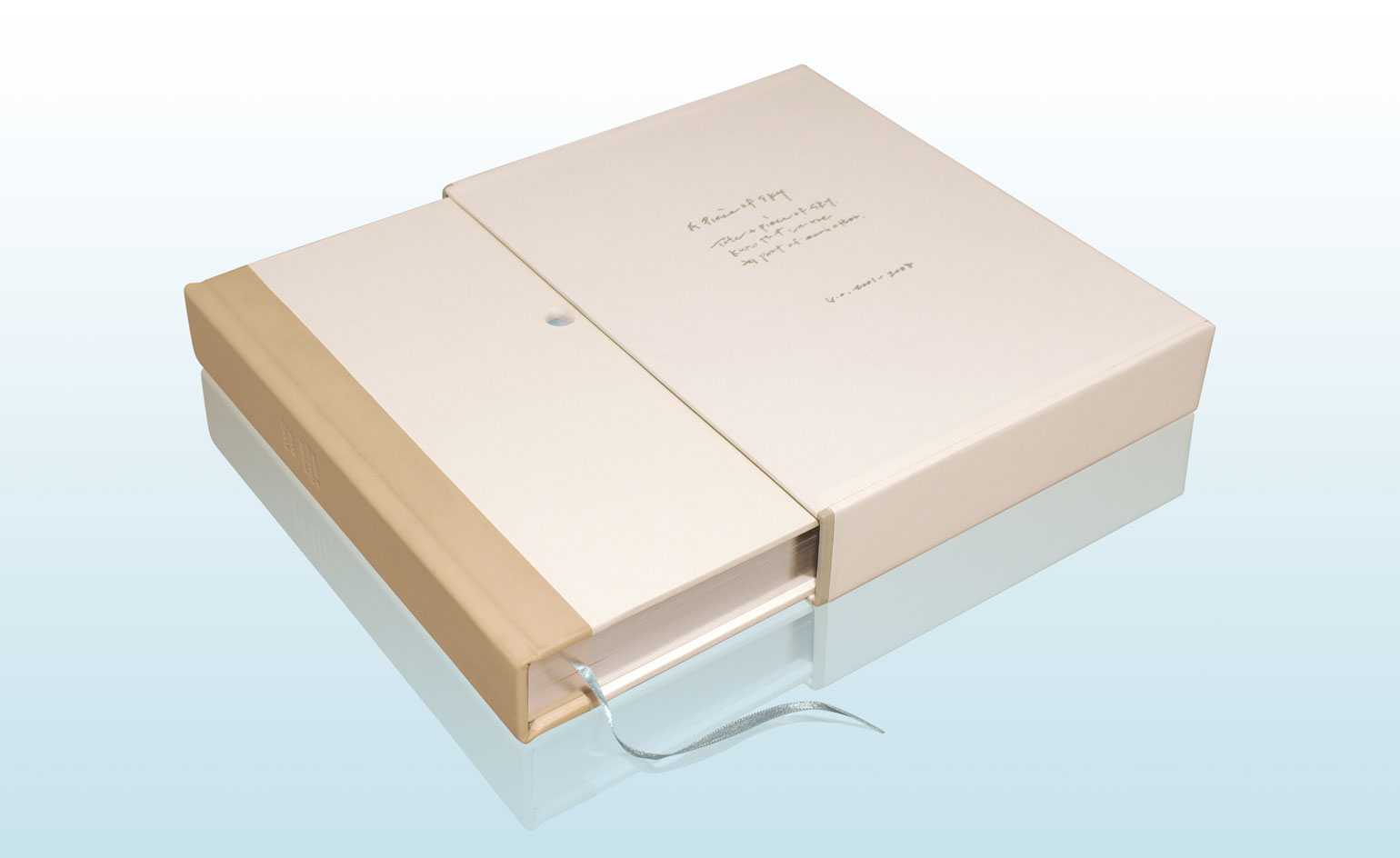
Yoko Ono has never shirked from the utopian potential of art. The octogenarian artist has been a vital force in conceptual art since her very first works in the late 1950s and 60s, although her subsequent trajectory into global celebrity overshadowed the importance and legacy of her work. In the decades that followed, she brought conceptual art to new audiences – an occasionally difficult path for an artist whose carefully considered approach has always prized the ephemeral, transient role of ideas and dreams.
Infinite Universe at Dawn brings together a vast array of archival material spanning Ono's entire career; 1,500 copies will bear her signature too, as limited editions of the tome. Prepared and assembled by the artist together with Genesis Publications, the slip-cased 400-page volume includes lyrics, essays, interviews and statements, backed up with extensive unseen photographs and 45 tipped-in pieces of artwork and reproductions. It's impossible to separate Ono's oeuvre from her public image, although the sheer longevity of her career and quiet dedication and consistency has gone a long way to diluting the casual and insidious misogyny she has faced since her marriage to John Lennon in 1969.
The book is a celebration of Ono's considerable influence on the artistic landscape, presenting a body of work that not only spans a vast array of genres – from music to photography, poetry, installations, publications, activism and sculptures – but also draws a straight line from the 1960s to the modern era, a time of massive social and political upheaval. If nothing else, Ono's work offers an occasionally grubby mirror to society's collective cynicism. At a time when the utopian dreams of the counter-culture have never felt more vital or more distant, Infinite Universe is a refreshingly optimistic salve.
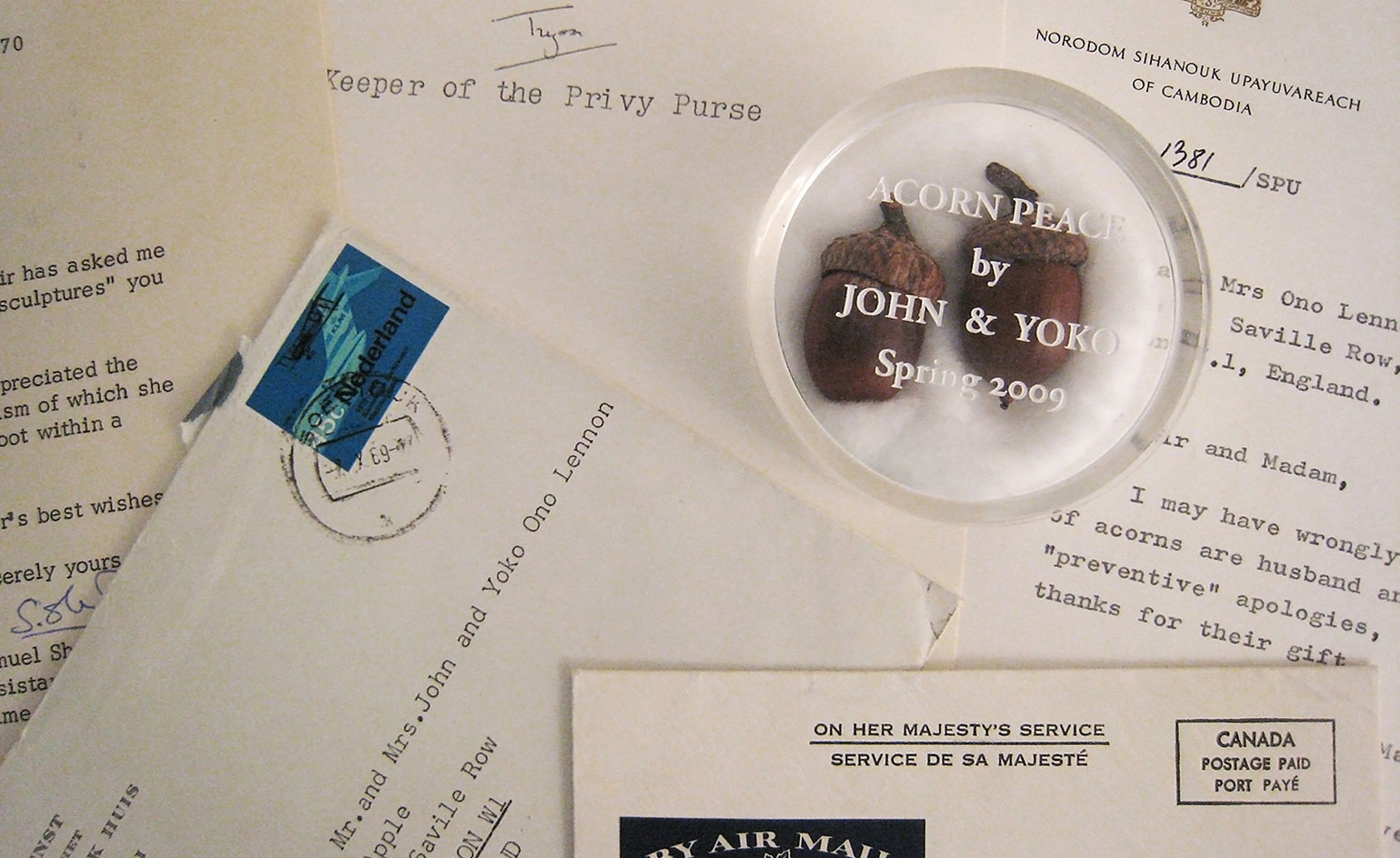
Ono has been a vital force in conceptual art since her very first works in the late 1950s and 60s, although her subsequent trajectory into global celebrity overshadowed the importance and legacy of her work. Pictured: Acorn Event, by Yoko Ono and John Lennon, 1968., copyright Yoko Ono

This slip-cased 400-page volume includes lyrics, essays, interviews and statements, backed up with extensive unseen photographs and 45 tipped-in pieces of artwork and reproductions. Pictured: Balance Piece, by Yoko Ono, 2010. courtesy Yoko Ono

The sheer longevity and consistency of Ono's career has gone a long way to diluting the casual and insidious misogyny she has faced since her marriage to John Lennon in 1969. Pictured: Bed-In for Peace, by Yoko Ono and John Lennon, 1969
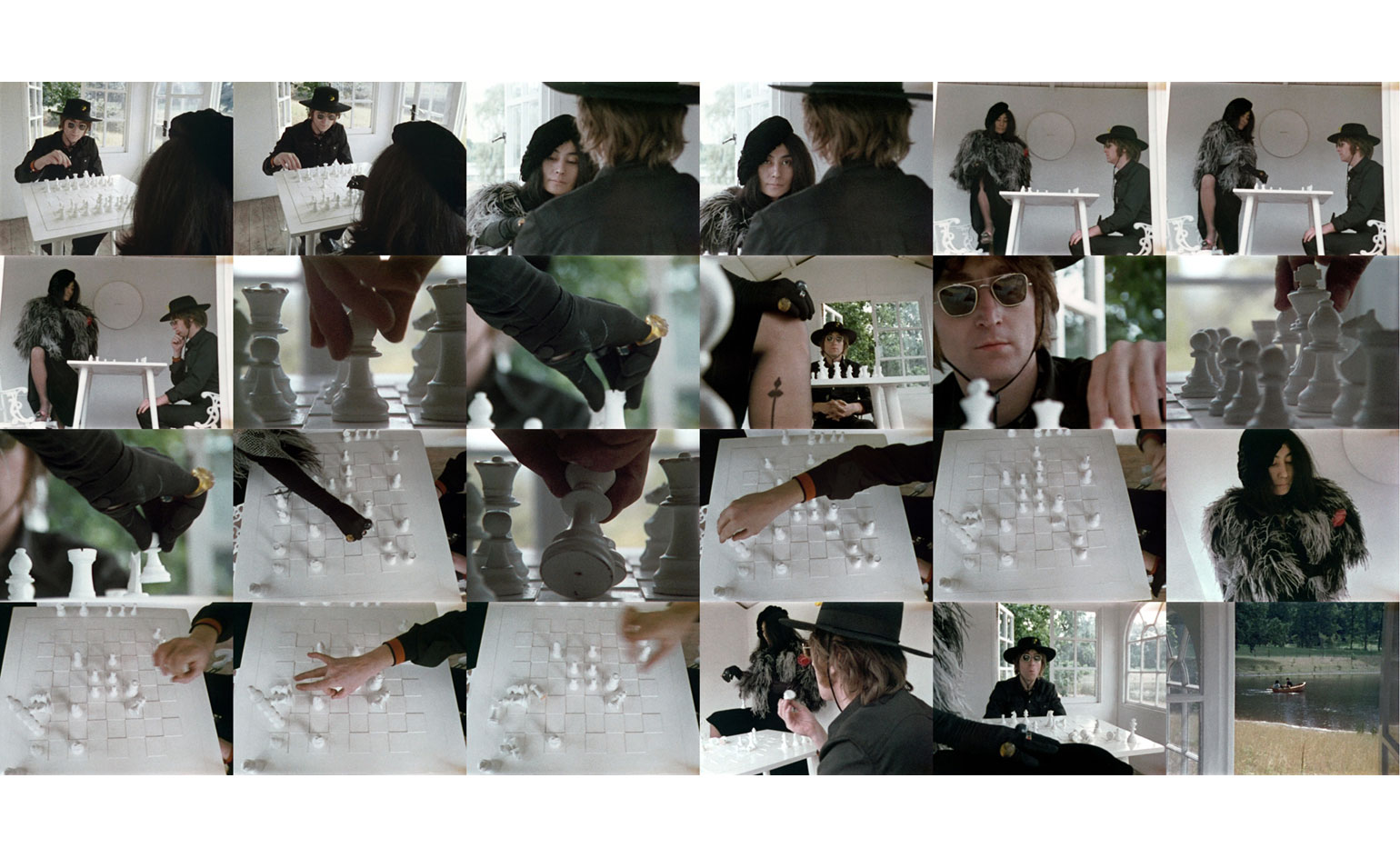
The book is a celebration of Ono's considerable influence on the artistic landscape, presenting a body of work that not only spans a vast array of genres... Pictured: Imagine, by Yoko Ono, 1971 (playing Yoko’s artwork White Chess Set, 1966).
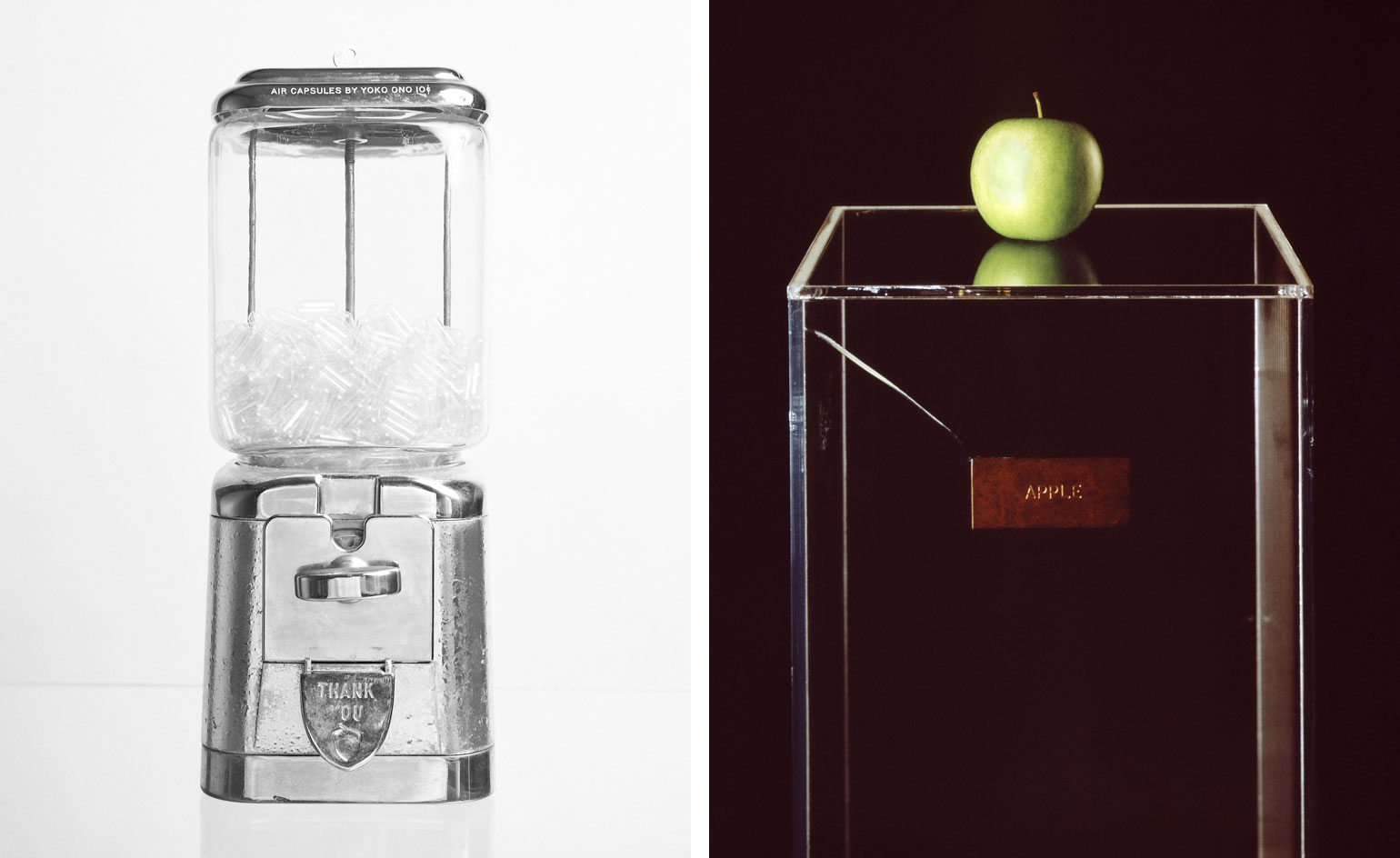
... But it also draws a straight line from the 1960s to the modern era, a time of massive social and political upheaval. Pictured left: Air Dispenser, by Yoko Ono, 1971. copyright Yoko Ono. Pictured right: Apple, by Yoko Ono, 1966. copyright Yoko Ono

Ono's work offers an occasionally grubby mirror to society's collective cynicism. Pictured: an example of the book's tipped-in imagery
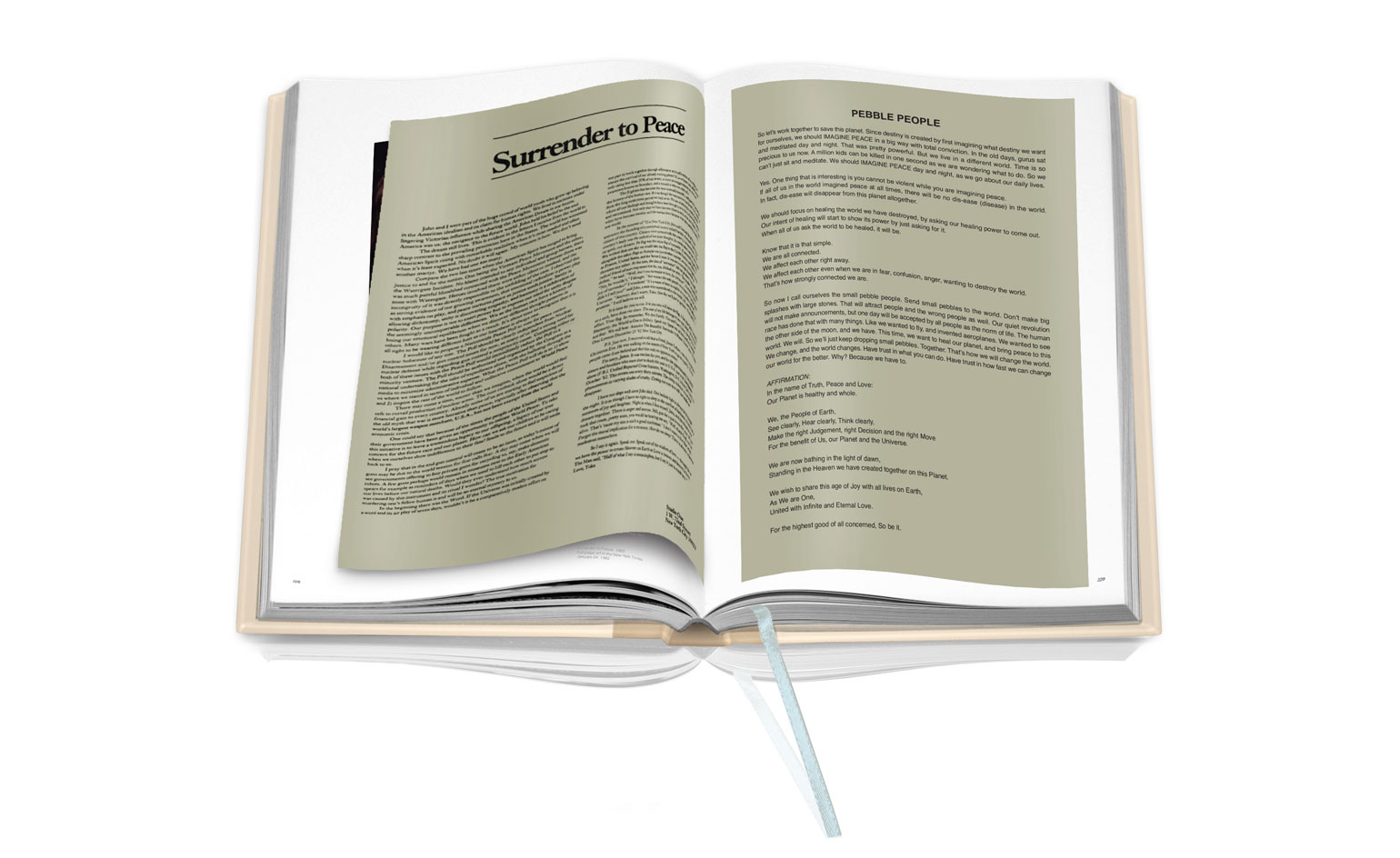
At a time when the utopian dreams of the counter-culture have never felt more vital or more distant, Infinite Universe is a refreshingly optimistic salve
Receive our daily digest of inspiration, escapism and design stories from around the world direct to your inbox.
Jonathan Bell has written for Wallpaper* magazine since 1999, covering everything from architecture and transport design to books, tech and graphic design. He is now the magazine’s Transport and Technology Editor. Jonathan has written and edited 15 books, including Concept Car Design, 21st Century House, and The New Modern House. He is also the host of Wallpaper’s first podcast.
-
 Discover the newest watches as LVMH Watch Week 2026 kicks off in Milan
Discover the newest watches as LVMH Watch Week 2026 kicks off in MilanWatch maisons unveil their 2026 releases in Milan
-
 Mickalene Thomas and Tom Wesselmann consider the female nude in Palm Springs
Mickalene Thomas and Tom Wesselmann consider the female nude in Palm Springs'The Female Form: Tom Wesselmann & Mickalene Thomas from the Collections of Jordan D. Schnitzer and His Family Foundation' places the artists' work in cultural context at Palm Springs Art Museum
-
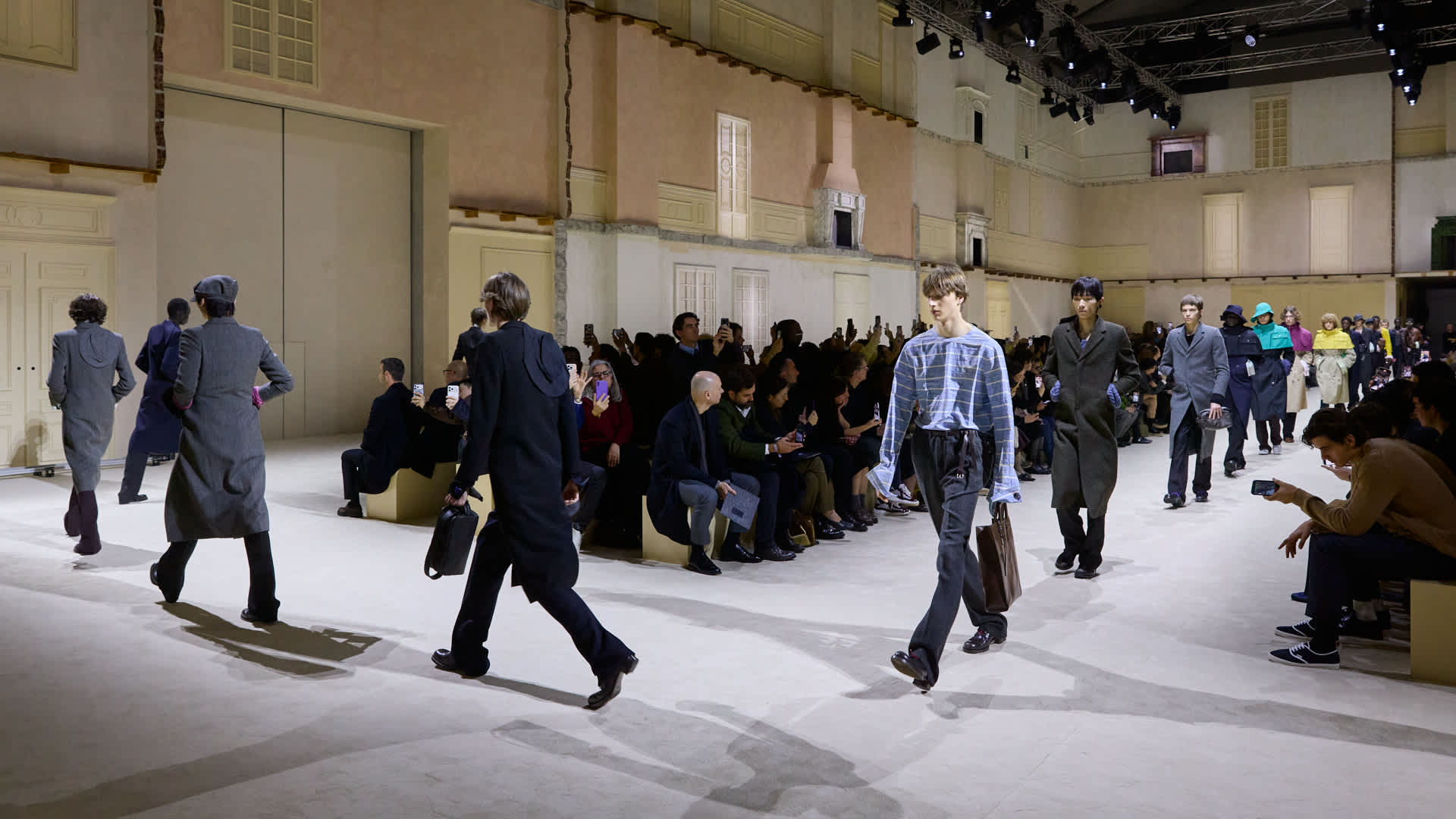 Prada’s A/W 2026 menswear show was about excavating the past to find the future
Prada’s A/W 2026 menswear show was about excavating the past to find the future‘It’s a kind of archaeology,’ said Raf Simons of his and Miuccia Prada’s latest menswear collection, which was presented at Fondazione Prada yesterday in Milan
-
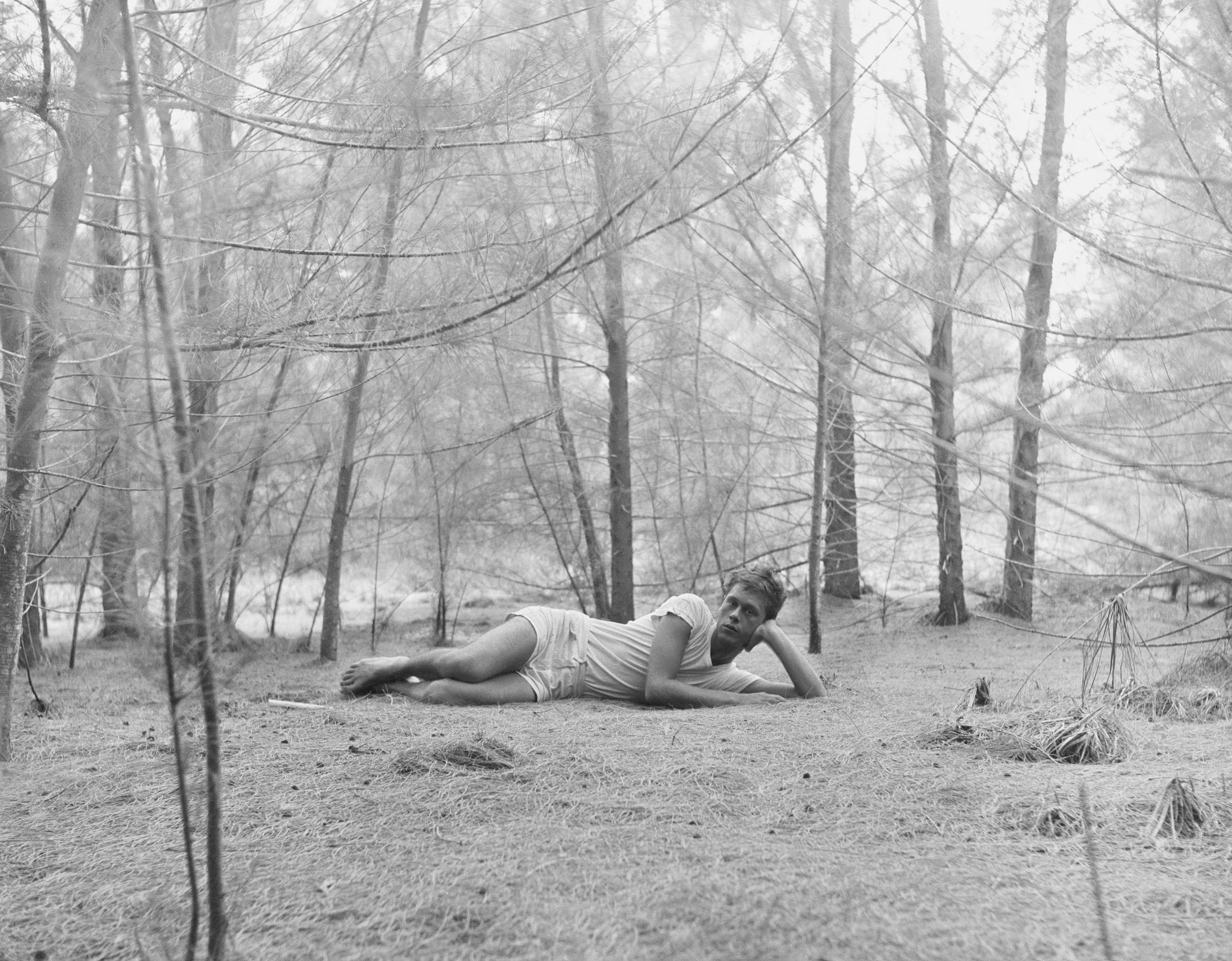 Inside the seductive and mischievous relationship between Paul Thek and Peter Hujar
Inside the seductive and mischievous relationship between Paul Thek and Peter HujarUntil now, little has been known about the deep friendship between artist Thek and photographer Hujar, something set to change with the release of their previously unpublished letters and photographs
-
 Sean Ono Lennon debuts music video for ‘Happy Xmas (War Is Over)’
Sean Ono Lennon debuts music video for ‘Happy Xmas (War Is Over)’The 11-minute feature, ‘War is Over!’, has launched online; watch it here and read our interview with Sean Ono Lennon, who aimed to make a music video ‘more interesting’
-
 Nadia Lee Cohen distils a distant American memory into an unflinching new photo book
Nadia Lee Cohen distils a distant American memory into an unflinching new photo book‘Holy Ohio’ documents the British photographer and filmmaker’s personal journey as she reconnects with distant family and her earliest American memories
-
 Out of office: The Wallpaper* editors’ picks of the week
Out of office: The Wallpaper* editors’ picks of the weekThe rain is falling, the nights are closing in, and it’s still a bit too early to get excited for Christmas, but this week, the Wallpaper* team brought warmth to the gloom with cosy interiors, good books, and a Hebridean dram
-
 Inside Davé, Polaroids from a little-known Paris hotspot where the A-list played
Inside Davé, Polaroids from a little-known Paris hotspot where the A-list playedChinese restaurant Davé drew in A-list celebrities for three decades. What happened behind closed doors? A new book of Polaroids looks back
-
 Inside the process of creating the one-of-a-kind book edition gifted to the Booker Prize shortlisted authors
Inside the process of creating the one-of-a-kind book edition gifted to the Booker Prize shortlisted authorsFor over 30 years each work on the Booker Prize shortlist are assigned an artisan bookbinder to produce a one-off edition for the author. We meet one of the artists behind this year’s creations
-
 Out of office: The Wallpaper* editors’ picks of the week
Out of office: The Wallpaper* editors’ picks of the weekThis week, the Wallpaper* editors curated a diverse mix of experiences, from meeting diamond entrepreneurs and exploring perfume exhibitions to indulging in the the spectacle of a Middle Eastern Christmas
-
 14 of the best new books for music buffs
14 of the best new books for music buffsFrom music-making tech to NME cover stars, portable turntables and the story behind industry legends – new books about the culture and craft of recorded sound